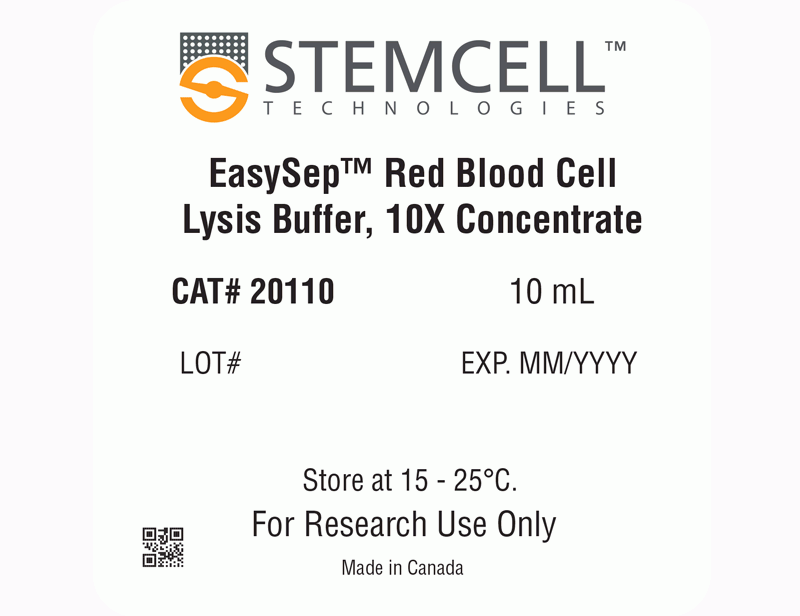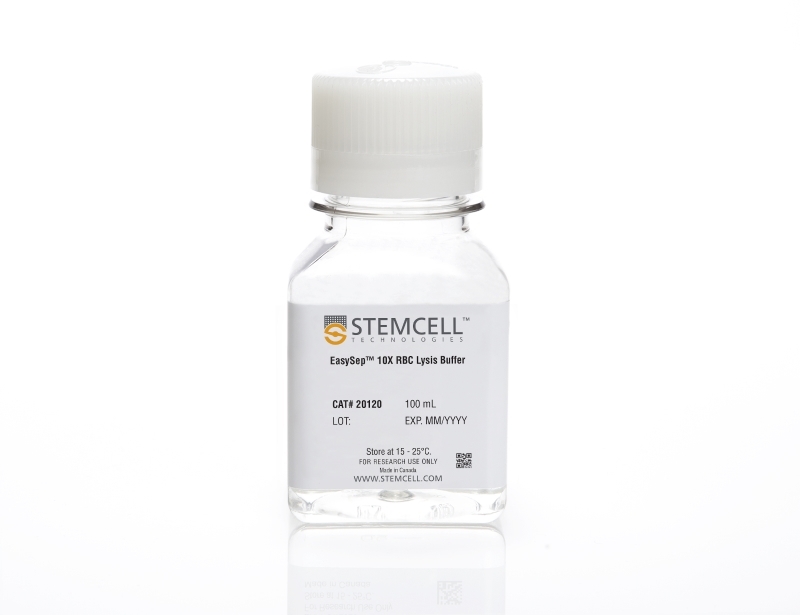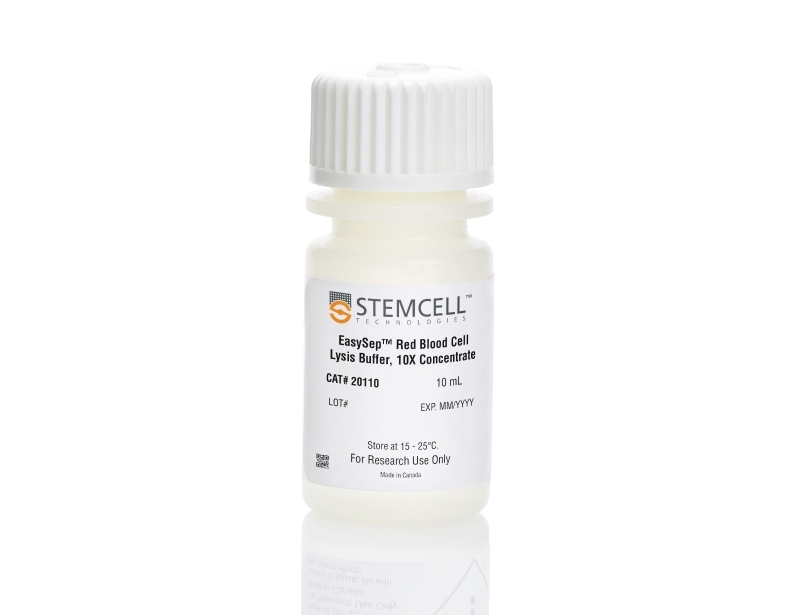EasySep™ Red Blood Cell Lysis Buffer
Red blood cell lysis buffer
概要
EasySep™ Red Blood Cell Lysis Buffer is for use as directed with EasySep™ or RoboSep™ Whole Blood kits for the lysis of red blood cells prior to separation from whole blood.
Species
Human
Brand
EasySep
Area of Interest
Chimerism, HLA, Immunology
技术资料
| Document Type | 产品名称 | Catalog # | Lot # | 语言 |
|---|---|---|---|---|
| Product Information Sheet | EasySep™ Red Blood Cell Lysis Buffer | 20110 | All | English |
| Product Information Sheet | EasySep™ Red Blood Cell Lysis Buffer | 20120 | All | English |
| Safety Data Sheet | EasySep™ Red Blood Cell Lysis Buffer | 20110, 20120 | All | English |
数据及文献
Publications (1)
Stem cells translational medicine 2014 JAN
Expansive generation of functional airway epithelium from human embryonic stem cells.
Abstract
Abstract
Production of human embryonic stem cell (hESC)-derived lung progenitors has broad applicability for drug screening and cell therapy; however, this is complicated by limitations in demarcating phenotypic changes with functional validation of airway cell types. In this paper, we reveal the potential of hESCs to produce multipotent lung progenitors using a combined growth factor and physical culture approach, guided by the use of novel markers LIFRα and NRP1. Lung specification of hESCs was achieved by priming differentiation via matrix-specific support, followed by air-liquid interface to allow generation of lung progenitors capable of in vitro maturation into airway epithelial cell types, resulting in functional characteristics such as secretion of pulmonary surfactant, ciliation, polarization, and acquisition of innate immune activity. This approach provided a robust expansion of lung progenitors, allowing in vivo assessment, which demonstrated that only fully differentiated hESC-derived airway cells were retained in the distal airway, where they aided in physiological recovery in immunocompromised mice receiving airway injury. Our study provides a basis for translational applications of hESCs for lung diseases.




